Some of the World’s Best Climbers Didn’t Qualify for the Olympics. Here’s What They’re Doing Instead.

Qualifying for the Olympics is remarkably hard. Unlike a typical World Cup climbing event, where 60-80 competitors square off per gender and discipline, just 34 men and 34 women will compete in next week’s Paris Olympics: 20 in the Boulder & Lead Combined discipline, 14 in Speed. Those facts alone would make it very hard to qualify, but two other factors complicate it. First, because the Olympics aim for global representation, some Olympic tickets are reserved for athletes from regions that don’t have world-class competitors, which further increases competition in regions like Europe. Second, since the Olympics are structured around national competition, no country can send more than two athletes per gender per discipline, which means that countries with particularly strong populations—like France, Japan, and the United States—contain far more Olympic-caliber athletes than there are berths. All of which means that there are some very good climbers who won’t be vying for gold next week.
This has led to a lot of heartbreak. But it has also prompted a few climbers to redirect their goals outside, which has made at least one pundit (me) quite happy, since my least favorite thing about competition climbing (aside from the parkour style it’s introduced to gyms, which I’m too old and creaky to love) is that it distracts great climbers from leaving their mark on the real rock. (Seriously though: What amazing first ascents might Adam Ondra have done if he hadn’t spent years preparing first for Tokyo and then for Paris? An even harder Dawn Wall? We’ll never know. But I do know I’d care more about them than any Olympic result.)
So here—in alphabetical order—is an incomplete list of climbers who are taking full advantage of their Olympic-level fitness.
Sean Bailey

In the 2019 IFSC combined qualifier, Sean Bailey missed his ticket to the first ever Sport Climbing Olympics by just one slot. (He performed well enough in Boulder and Lead but was stymied by Speed climbing’s inclusion in the 2020 Combined category). Last October, at the Pan American Games, Bailey again missed his Olympic berth—and again by just one place, coming in second to teammate Jesse Grupper. By that point, Colin Duffy had already qualified, so—because of the size limits on the teams—Bailey didn’t have the option to compete in the Olympic qualifier series. The U.S. had filled its slots. And even though he was (and still is) the only American to climb both V16 and 5.15c; and even though, in 2021, he broke the ice and became the first American to win a Lead World Cup in more than a decade—Bailey was out once again.
Bailey quickly expressed his disappointment on Instagram, noting, too, that missing out on the Olympics was likely to exacerbate his precarious financial situation as a professional climber. But a lot of climbers, me included, were quietly excited about the fact that Bailey was done with competitions and ready to turn his attention back to real rock. We were pumped to see what he could do now that he wasn’t training on and for plastic all the time—perhaps even racking up the kind of accomplishments that would get him attention from the right kind of sponsors
We didn’t have to wait long. In November, he flashed Slasher (V13) in Joe’s Valley. In December he did the first ascent of Doors of Perception, a longstanding project in Little Cottonwood Canyon, that he called V15. That same month, he made a rare repeat of Bishop’s Lucid Dreaming, subtly proposing a re-upgrade to V16. In January he did Mandala Sit (V14). In early February he made the first ascent of Devilution (V16), another longstanding Bishop project, just to the right of Lucid. He then spent a wet spring in Switzerland, managing to come away with an ascent of Giuliano Cameroni’s Eye in the Sky (V15), before heading to Finland for a short trip, where he made some very promising links on Burden of Dreams (V17).
As an outdoor climber and climbing nerd, all I can say is “Welcome back, Sean. Psyched to see what you get up to.”
(His compatriot Zach Galla, by the way, also barely missed the Olympics and took a similar track. But I’ve already written about his post-comp plans; you can find the article here.)
View this post on Instagram
Kyra Condie

Of the four U.S. athletes who competed in the 2021 Tokyo Olympics, two of them—Brooke Raboutou and Colin Duffy—are back in the Olympics this year. A third, Nathaniel Coleman, who took silver in the 2020 men’s Sport Climbing Combined, has since stepped away from competitions and seems to climb predominantly outside. The fourth, Kyra Condie, still competes—but thanks in part to a variety of injuries and the high volume of Olympic-level talent now fielded by the United States, she didn’t make the Olympic team. What’s she doing instead? She’s in Rocklands, South Africa, working her way through a list of problems that shut her down during her last visit, in 2018. One of these was her first V13, The Vice, and she put it down without much effort. I predict we’ll see more of this soon.
View this post on Instagram
Stefano Ghisolfi
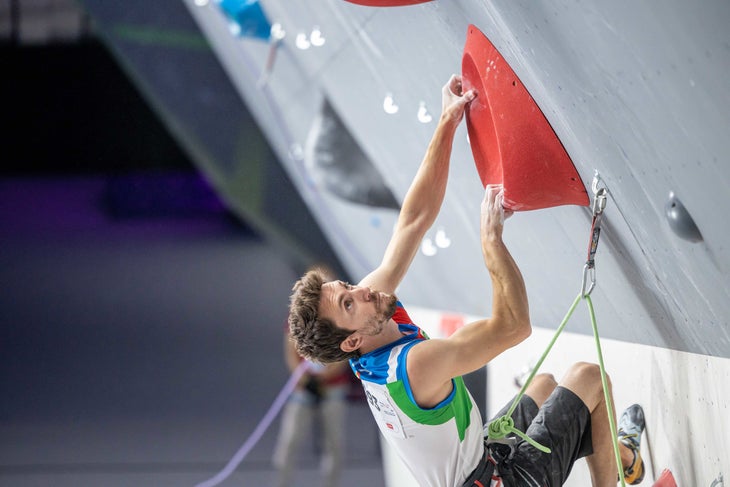
“Don’t look for me in Paris, I’ll be in Flatanger.”
That’s what Italy’s Stefano Ghisolfi, 31, wrote on Instagram on June 23, after failing (for a second time) to earn his Olympic ticket. Though Ghisolfi has a stellar competition track record—he won the 2021 IFSC World Cup Lead season and was second in the 2017 and 2018 seasons—he’s better known for his performance on real rock. When he climbed Perfecto Mundo in Margalef, Catalonia, Spain, in 2018, Ghisolfi became the fourth person—after Adam Ondra, Chris Sharma, and Alex Megos—to climb a route graded 5.15c. Since then, he’s done three more routes of the grade, including the second ascents of Adam Ondra’s Change in Flatanger, Norway; the second ascent of Alex Megos’s Bibliography, in Céüse, France; and the first ascent of Excalibur, in Arco, Italy, which remains unrepeated despite significant investment from climbers like Adam Ondra and Will Bosi. Ghisolfi is also one of the climbing world’s most beloved YouTubers, bringing a delightfully nerdy humor to videos about his projecting process on routes like Silence and boulder problems like Burden of Dreams. Since the Olympic qualification series, Ghisolfi’s Instagram has been full of videos of him climbing outdoor roof boulders—picked as training for the bouldery roof sequence on Silence. A brief glance at his IG comments suggest that I’m not alone in being pretty psyched to see how he does in Flatanger.
Alex Honnold
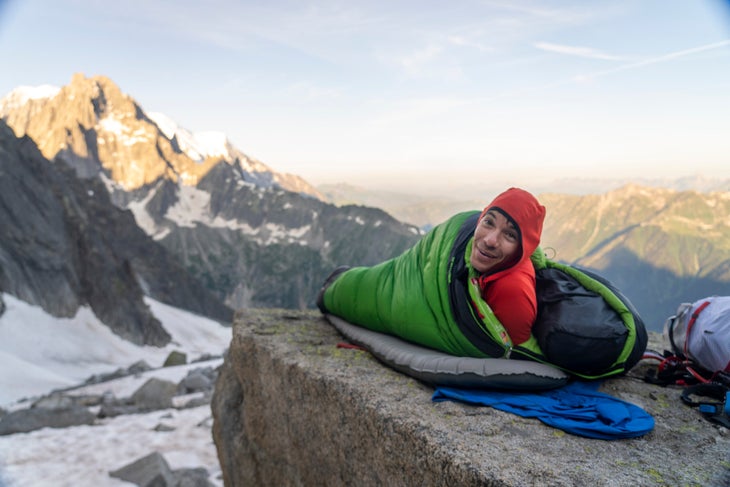
Alex Honnold isn’t in the Olympics—because he didn’t try—because he’s not a competition climber—because, frankly, he was never strong enough to be one. That said, most people overlook the fact that 20 years ago, before Honnold was a world famous free soloist, he was actually a relatively formidable competitor at the U.S. youth level. In 2004, he got silver at Youth Nationals, which earned him a ticket to the Youth World Championships, where he… got basically dominated, placing 39th. After that, he cut his losses and turned his attention to dangerous stuff. The owners and staff at his local climbing gym saw this and allowed him to free solo in the gym after hours, hoping he’d get it out of his system. Obviously that didn’t happen. Want more fun Honnold facts? Check out An Incomplete List of Alex Honnold’s Less Famous Badassery.
Annie Sanders
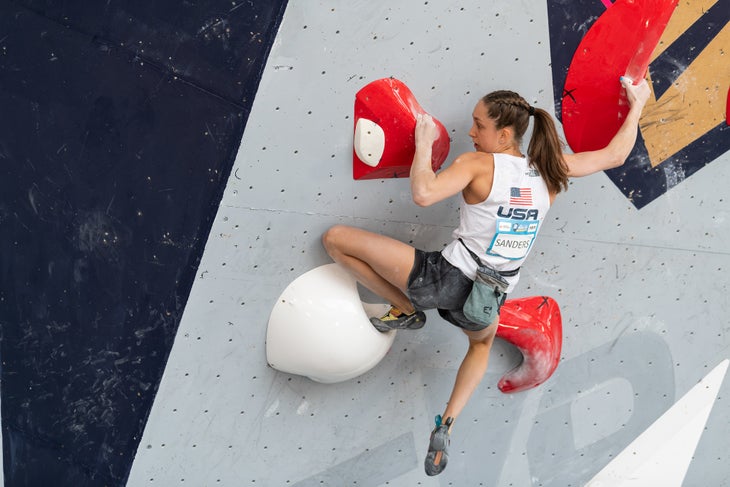
There’s a lot of time left for 17-year-old Annie Sanders who’s already one of the U.S.’s leading competitors. In 2021, she took first in Boulder, Lead, and Combined at the IFSC Youth World Championships. The next year, at just 15, she went to her first adult Nationals and took first in both Bouldering and Lead, edging out veterans like 2020 Olympian Kyra Condie. She did the same thing at USA Team Trials in 2023, earning herself a spot on the World Cup circuit. Last year, during her first season on the circuit, she came in 9th overall in Boulder and made finals several times—at age 16, remember. Though she was a long shot for this year’s Olympic team, Sanders climbed well during the Olympic Qualifying events in Shanghai and Budapest, placing 14th in both; but the slot went to teammate Brooke Raboutou. When she did not qualify, she opted to continue building experience on the World Cup Circuit. So far this year, she’s made finals in all four competitions she’s entered, and she made her first podium—a bronze in Bouldering—at Innsbruck. I’ve heard Sanders called “the next big thing” for Team USA. And I think that’s right.
Mejdi Schalck
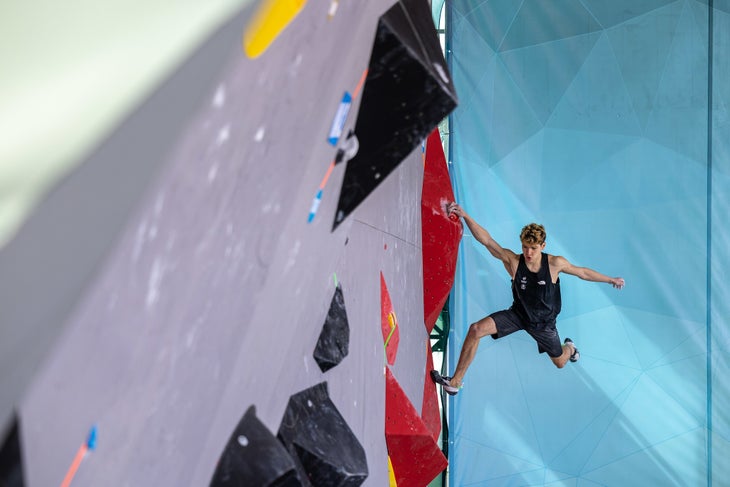
While disappointing to not see him in the Olympics, it’s been cool to watch France’s Mejdi Schalck—who despite his young age (20) has repeatedly proven himself one of the most talented boulderers on the World Cup circuit—show us what he can do on the stone.
After years of dominance in the youth circuit, in 2022 Schalck launched into podium positions in the adult World Cups, displaying a special knack for coordination moves and parkour-style problems. He’s since won three Bouldering World Cups, taken bronze at two more, and finished second in the 2023 World Championships. The Combined format—in which both Boulder and Lead are given equal weight—doesn’t particularly suit Schalck’s strengths, though he has made finals in several high profile Lead comps, and he took bronze in Lead at the 2022 World Games in Birmingham. For these reasons, he was very much considered a Olympic contender, but despite putting on a strong enough performance to get into the Olympics during the qualifier series in Shanghai (where he was 10th) and Budapest (where he was 6th), he was edged out by competition within Team France, coming in third behind Sam Avezou (who placed 8th and 1st) and Paul Jenft (who placed 9th and 4th).
After putting so much of his climbing into competitions, Schalck wrote on Instagram that failing to qualify “hits hard. I can’t find the words to describe how I feel right now, but the only thing I know is that it will take some time to process.”
After a month of social media silence, during which he did not compete in any of the intervening World Cups, Schalck recently started posting again, revealing that he’s spent some much-deserved time bouldering outside in Magic Wood, Switzerland. While there, he racked up an impressive tick list and, more importantly, seemed to have a lot of fun. “Back from a great trip in Magic Wood,” he wrote. “Had the chance to climb some crazy lines here. Excited to come back and set up some harder projects!”
https://www.instagram.com/p/C9utChCtxv7/?img_index=1
Sean McColl
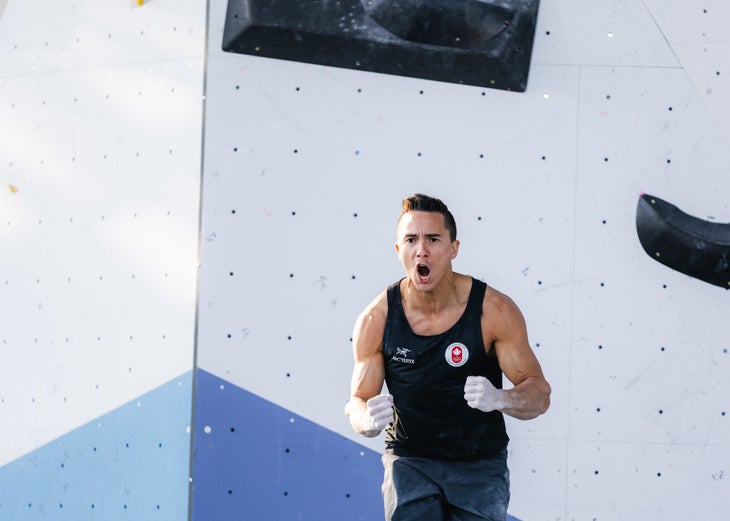
Canada’s Sean McColl is one of the most devoted members of the circuit. McColl did his first adult World Cup in 2003—yes, 21 years ago—while still in the middle of his prolific youth career (he won his division in 2002, 2003, 2004, and 2006). He went on to earn nearly three dozen World Cup medals and compete in the 2020 Olympics—and he’s still competing. Two weeks after he failed to qualify for the Olympics, his partner gave birth to their first child.
View this post on Instagram
Jim Pope
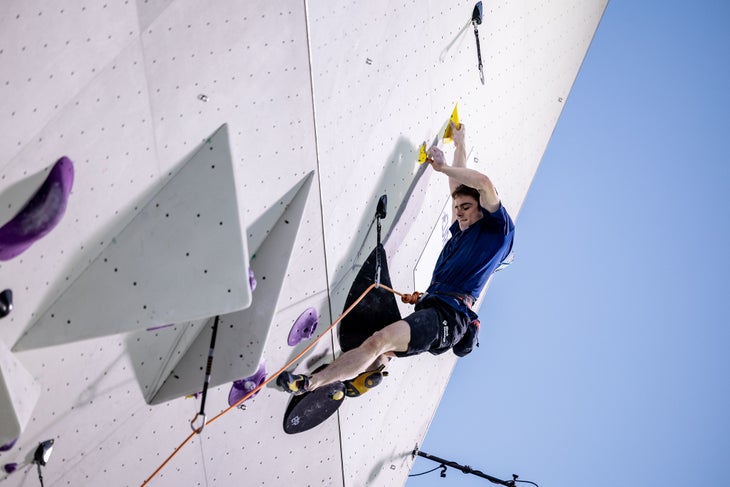
Jim Pope might not be widely known in the U.S. yet, but he’s one of the world’s greatest all-around climbers. Pope regularly competes on the IFSC World Cup circuit, stars in board climbing and outdoor bouldering videos alongside the likes of Aidan Roberts, and has a significant track record of ascents on the UK’s legendarily bold gritstone. He manages this improbably diverse schedule by climbing six days per week, often stacking multiple training sessions each day. But even when he’s deep in a training block, Pope makes sure he finds time to get outside. Indeed, just days before the second Olympic qualifying event, in Budapest, Pope took advantage of a rare June cold spell and went out to make the first ascent of a wild looking E9 6c trad route (very dangerous 5.13)—in the process demonstrating a kind of well-roundedness that only Adam Ondra can seriously rival among this year’s Olympic hopefuls. After coming up short in his Olympic run, Pope pivoted. He sent a Mares (5.13a; 1,000ft) on the Aiguille de la Brenva in the Italian Alps. He participated in The North Face’s Mind the Drop deep water soloing festival. He did the first ascent of a V13/14 on the gritstone. And now he’s off to climb some big walls in Kyrgyzstan.
The post Some of the World’s Best Climbers Didn’t Qualify for the Olympics. Here’s What They’re Doing Instead. appeared first on Climbing.

